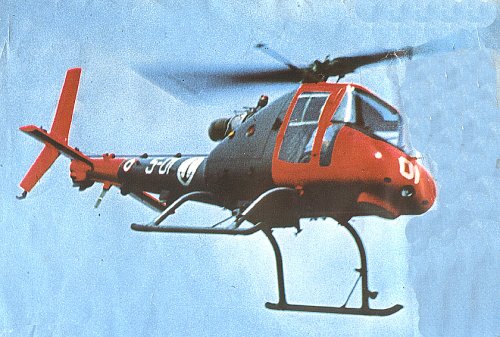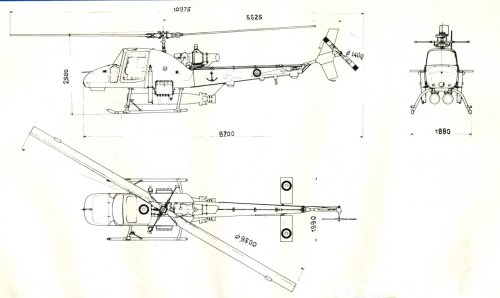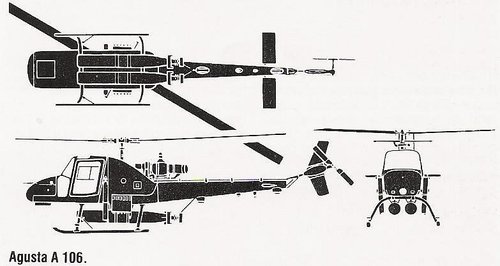They might be smoke floats/ marine marker dispensers.
I always thought of the A-106 being more or less a Fairey Ultralight analogue, i.e. the ship tells the pilot where to drop the torpedo based on the ship's sonar contact.
Early in the game, you needed a helicopter the size of a Sikosky S-61 Sea King (21,000 pound max. take-off weight) to carry both sensors and crew and torpedoes. Even with all that extra capacity, Canadian CH-124A Sea Kings often dropped disposable sono-bouys because they burned less fuel than when hovering to lower the dipping sonar.
At best, a small helicopter like A.106 could drop a few sono-bouys which would transmit signals back to the ship for processing. Then ship's officers would tell the A.106 where to drop torpedoes.
Similar-looking light helicopters - based upon Bell 206 Jet Ranger - were test-flown in Iran, Chile (Cardoen Cb 206 light attack helicopter) and the USA. None of the Jet-Ranger conversions entered production.



